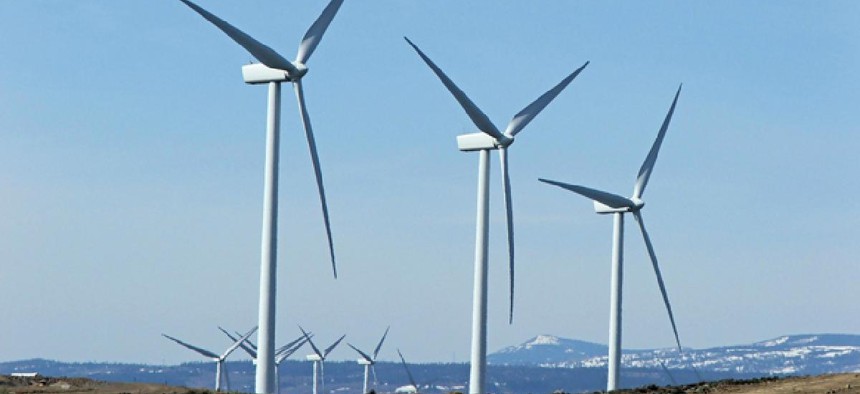
Flickr user wastatednr
Budget reflects scaled-back vision for clean energy
Plan would take the Energy Department’s renewables spending up to $2.3 billion.
President Obama’s fiscal 2013 budget proposal asks Congress to increase spending on renewable-energy projects by about $500 million – almost the same amount the Energy Department lost on its loan guarantee for the bankrupt solar-panel manufacturer Solyndra.
The proposed spending increase, which would take the Energy Department’s renewables spending up to $2.3 billion, compared to $1.8 billion in fiscal 2012, is a clear signal that Obama plans to push ahead with full-throated support of clean energy on the campaign trail, despite the Solyndra controversy.
The bump up is part of an overall increase in the Energy Department’s topline request of $27.2 billion, up 3.2 percent from fiscal 2012 levels.
“In light of the tight discretionary spending caps, this increase in funding is significant and a testament to the importance of innovation and clean energy in the country’s economic future,” the agency wrote in its request.
Practically, though, the request for new clean-energy spending is dead on arrival on Capitol Hill, where election-year partisan deadlock has all but assured that Congress won’t even pass a budget this year. And even if it did, the Republican-controlled House would be sure to attack any fresh Energy Department spending on renewable-energy programs.
And while Obama's proposed boost in clean-energy spending may seems bold in the face of the rain of criticism he knows will come from House Republicans, it represents a deeply scaled-down vision of his once-ambitious agenda. Campaigning in 2008, Obama proposed a sweeping clean-energy plan that would have budgeted $150 billion over a decade in federal spending. By comparison, clean-energy advocates say that this year’s relatively paltry proposal won’t come close to scaling up the nation’s clean-energy economy to the size once envisioned by the Obama administration.
The president's budget request proposes once again to slash long-standing tax breaks to coal, oil, and gas companies -- a move that would raise $46 billion over 10 years to help pay for his clean-energy vision. Democrats have tried and failed for years to end these tax breaks, and they’ll likely have just as much success this year as in years past. The White House knows this, of course, but proposing to slash the tax breaks to oil companies gives Democrats an important talking point in an election year likely to see voter ire at high gasoline prices. It also helps set the stage for a debate on broad corporate tax reform in 2013. Although oil companies have fought the rollback of their tax breaks tooth and nail, they’ve said they would be willing to come to the table in 2013.
Most of the rest of the increase in the Energy Department funding request comes in boosts to its chief portfolio, managing the nation’s nuclear-weapons arsenal. The agency requests $7.6 billion for weapons activities, a 5 percent increase above the fiscal 2012 enacted level, for such things as continuing nuclear-weapon life-extension programs and sustaining the existing stockpile.
NEXT STORY: Pick Your Avatar






